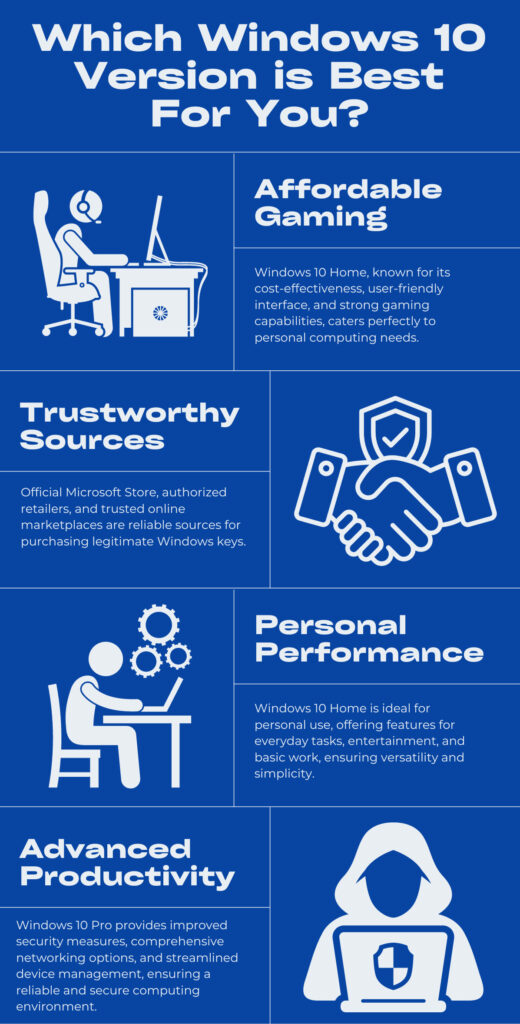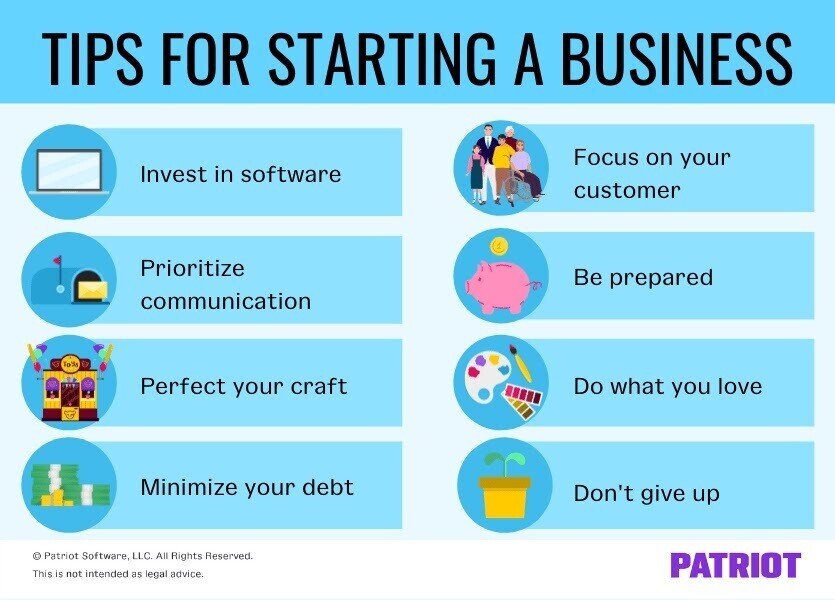10 Essential Tips for Windows 10 Beginners

Unlock the secrets of Windows 10 with these 10 essential tips that every beginner needs to know. Don't miss out!
Table of Contents
- Introduction: Welcome to Windows 10!
- Setting Up Your User Account
- Navigating the Start Menu
- Customizing the Desktop Experience
- Exploring Microsoft Edge and Internet Safety
- Installing New Applications
- Uninstalling Applications You No Longer Need
- Using Cortana for Help
- Managing Your Files and Folders
- Keeping Windows 10 Updated
- Finding More Help When You Need It
- Conclusion: You're a Windows 10 Explorer Now!
- Frequently Asked Questions (FAQs)
Introduction: Welcome to Windows 10!
Welcome to the exciting world of Windows 10! If you're new to this popular operating system, don't worry – you're in the right place. With a few handy tips and tricks, you'll be mastering Windows 10 in no time. Let's dive in and discover the amazing Windows experience together.
Setting Up Your User Account
Setting up your user account on Windows 10 is the first step to personalizing your Windows experience. Let's walk through the process so you can get started!
Choosing Your Account Type
When setting up your user account, you have the option to choose between different types, such as administrator or standard. An administrator account allows you to make changes to the system settings and install software, while a standard account is more limited in what it can do. Select the account type that best suits your needs.
Personalizing Your Account
After choosing your account type, it's time to personalize your account. You can add a fun account picture that represents you and set a password to keep your account secure. Personalizing your account makes using Windows 10 more enjoyable and helps you make it truly your own!
Navigating the Start Menu
When you first log in to Windows 10, you'll see the Start Menu. It's like the front door to all the cool stuff on your computer. If you're looking for a specific app, you can scroll through the list on the Start Menu or use the search bar at the bottom. Just type the name of the app you want, and Windows 10 will find it for you!

Image courtesy of blog.electronicfirst.com via Google Images
Pinning Your Favorite Apps
Do you have apps that you use all the time? You can make them easy to find by pinning them to the Start Menu. Just right-click on the app you want to pin, and select "Pin to Start." Now, whenever you open the Start Menu, your favorite apps will be right there at the top, ready for you to click on and use. It's like having your own personalized shortcut!
Customizing the Desktop Experience
Once you've set up your account and become familiar with the Start Menu, it's time to make your Windows 10 desktop uniquely yours. Customizing the desktop experience can not only make it visually appealing but also improve your workflow with shortcuts to your favorite programs and files.
Changing Your Wallpaper
Your desktop wallpaper is like the background of your computer screen. It's fun to choose a wallpaper that you love, whether it's a picture of your favorite superhero, a beautiful landscape, or a cute animal. Here's how you can change your wallpaper:
1. Right-click on an empty space on your desktop.
2. Select 'Personalize' from the drop-down menu.
3. Choose 'Background' and browse through the options to pick a new wallpaper.
4. Click on the one you like, and it will automatically change your desktop background.
Organizing with Shortcuts
Shortcuts are like magic buttons that can instantly open up your most-used programs or files. By creating shortcuts on your desktop, you can easily access them without having to search for them every time. Here's how to create shortcuts:
1. Find the program or file you want a shortcut for in the Start Menu or File Explorer.
2. Right-click on it and select 'Create shortcut'.
3. A shortcut to that program or file will appear on your desktop.
4. You can then click on the shortcut to quickly open it whenever you need to use it.
Personalizing your desktop with wallpapers and organizing shortcuts can make using your computer more enjoyable and efficient. Try it out and see how it enhances your Windows 10 experience!
Exploring Microsoft Edge and Internet Safety
When you open your Windows 10 computer, you might see an icon that looks like a blue "e." That's Microsoft Edge - the web browser that comes with Windows 10. It's like a magical window that lets you travel around the Internet and discover amazing things. Let's learn a bit more about using Microsoft Edge!

Image courtesy of blogs.onlineeducation.touro.edu via Google Images
Using Microsoft Edge
Microsoft Edge is a web browser that helps you visit websites, watch videos, play games, and find information online. To start using it, just click on the Microsoft Edge icon. You can type the name of a website you want to visit in the address bar at the top of the screen. Or, you can use a search engine like Bing to look for something specific by typing in keywords.
Microsoft Edge also lets you bookmark your favorite websites so you can easily find them again later. Just click on the star icon next to the address bar, and the website will be saved in your favorites.
Staying Safe Online
While exploring the Internet can be a lot of fun, it's important to remember to stay safe while doing so. Here are a few simple tips to help you stay safe online:
1. Keep your personal information private. Don't share your full name, address, phone number, or any other personal details with strangers online.
2. Be cautious when clicking on links or downloading files. Only click on links from websites you trust, and be careful when downloading things from the Internet.
3. Use strong passwords. When creating passwords for websites, make sure they are strong and unique. Avoid using easily guessable passwords like "123456" or "password."
By following these simple habits, you can enjoy exploring the Internet with Microsoft Edge while keeping yourself safe and secure online.
Installing New Applications
So you've gotten the hang of navigating Windows 10 and customizing your desktop, but now it's time to add some new fun things to your computer! Installing new applications, like games and tools, can help you do even more with your Windows 10 experience.
Finding New Applications
When you want to find new applications to install on your Windows 10, you can visit the Microsoft Store. It's like a digital shop where you can browse through different apps, games, and tools. You can search for specific things you're looking for, or you can explore different categories to discover new and exciting applications to try out.
Adding Applications to Your Computer
Once you've found an application you want to install, simply click on it to open the app's page. There, you'll see an "Install" button that you can click to start downloading and installing the application onto your computer. Depending on the size of the app and your internet speed, the installation process might take a little bit of time, so be patient!
After the application is installed, you can find it in your Start Menu or on your desktop, depending on how the app is designed. Just click on it to open and start using your new application. It's like getting a new toy to play with!
Uninstalling Applications You No Longer Need
As you start using your Windows 10 computer, you may find that over time you accumulate apps that you no longer use. It's important to remove these applications to free up space on your device and keep it running smoothly. In this section, we will guide you through the process of uninstalling applications you no longer need.

Image courtesy of venngage.com via Google Images
Locating the Apps to Uninstall
The first step is to identify the applications you no longer need. To do this, simply go to the Start Menu and look for the list of installed apps. Scroll through the list and find the ones you want to remove.
Uninstalling the App
Once you've identified the app you want to uninstall, right-click on it and select "Uninstall" from the dropdown menu. Follow the on-screen instructions to complete the uninstallation process. Some apps may require you to confirm the uninstallation or provide additional information, so make sure to read and follow the prompts carefully.
Checking for Removal
After you've uninstalled the application, it's a good idea to check that it has been successfully removed from your system. You can do this by going back to the Start Menu and checking the list of installed apps to ensure the app is no longer there.
| Tips | Description |
|---|---|
| 1 | Set up a Microsoft Account |
| 2 | Customize the Start Menu |
| 3 | Explore the Settings Menu |
| 4 | Learn Keyboard Shortcuts |
| 5 | Install Security Updates Regularly |
| 6 | Understand File Management |
| 7 | Use Virtual Desktops |
| 8 | Explore Cortana |
| 9 | Utilize the Windows Store |
| 10 | Backup Your Data |
By regularly uninstalling applications you no longer need, you can ensure that your Windows 10 experience remains optimized and clutter-free. This simple maintenance task can help you keep your device running smoothly and efficiently.
Using Cortana for Help
In Windows 10, there's a special digital assistant named Cortana who is always ready to help you out. Just like having a personal helper, Cortana can answer questions, set reminders, and even tell jokes! Let's learn how to make the most out of Cortana.
Getting to Know Cortana
To access Cortana, simply click on the search bar next to the Start Menu button. You can also use your voice and say, "Hey Cortana," if you have a microphone set up. Once Cortana is listening, you can ask questions like "What's the weather today?" or "Tell me a joke."
Setting Reminders and Alarms
If you need to remember something important, Cortana can help you set reminders and alarms. Just tell Cortana what you need to remember, like "Remind me to finish homework at 5 PM," and she'll make sure you don't forget.
Searching for Information
Cortana is like a walking encyclopedia right on your computer. If you have any questions or need information, just type or speak your question to Cortana, and she'll do her best to give you the answer. Whether it's about animals, history, or math problems, Cortana is there to help.
With Cortana by your side, you'll have a helpful friend to assist you with anything you need on your Windows 10 journey!
Managing Your Files and Folders
In Windows 10, managing your files and folders is essential for keeping your digital space neat and organized. Here, we'll show you how to create new folders and move files around to help you stay on top of your schoolwork and projects.
Image courtesy of blog.hubspot.com via Google Images
Creating New Folders
Creating new folders is like making a little digital cabinet to store your files. Here's how to do it:
- Right-click on an empty space on your desktop or inside a folder.
- Hover over "New" in the menu that pops up.
- Select "Folder" from the options.
- Name your new folder something descriptive, like "Science Project" or "Math Homework."
Now you have a brand new folder ready to keep your related files organized!
Moving Files into Folders
Once you have your folders set up, it's time to start moving files into them. This will help declutter your desktop and make it easier to find what you need. Here's how you can move files:
- Select the file or files you want to move by clicking on them.
- Click and hold the file, then drag it over to the folder you want to move it to.
- Release the file when the folder is highlighted, and the file will move into the folder.
It's that simple! By creating folders and moving files into them, you can keep your schoolwork, photos, and other files organized and easy to find.
Keeping Windows 10 Updated
It's essential to keep your Windows 10 system updated to ensure you have the latest features and security measures in place. Windows updates are like getting cool new gadgets for your computer and making sure it's safe from any bad bugs that might try to sneak in.
Why Updates are Important
When you see that little notification telling you there's a new update available for Windows 10, it's like finding a treasure chest full of exciting things. These updates can make your computer run faster, smoother, and even add fun stuff to play with.
Not only do updates bring new features, but they also help keep your computer safe from bad guys on the internet who might try to sneak in and steal your information. It's like having a superhero guarding your computer against villains.
How to Update Windows 10
Updating your Windows 10 is easy peasy. Just click on the Start button, then go to Settings. From there, find the Update & Security option and click on it. You'll see a button that says "Check for updates." Click on it, and Windows will start looking for any new updates available for your computer.
Once the updates are found, click on the "Download" button, and your computer will start getting all the cool new stuff that Microsoft has prepared for you. It's like getting a surprise gift, but even better because it keeps your computer running smoothly and safely.
Remember, it's essential to restart your computer after the updates are done to make sure everything works perfectly. It's just like giving your computer a little nap to refresh and feel brand new again.
Finding More Help When You Need It
After exploring the amazing features of Windows 10 and trying out different tips and tricks, you may come across some challenges or have questions along the way. Don't worry! There are plenty of resources available to help you out when you need it.

Image courtesy of www.semrush.com via Google Images
Where to Look for Help
If you find yourself stuck or confused while using Windows 10, there are several places you can turn to for assistance. One great resource is the Microsoft website, which offers a variety of how-to guides, tutorials, and troubleshooting tips for Windows 10 users. You can also search for specific questions on search engines like Google or Bing to find answers from other users who might have experienced the same issue.
Getting Help from Support
If you encounter a problem that you can't solve on your own, don't hesitate to reach out to Microsoft Support. They have a team of experts who can assist you with technical issues, software updates, and more. You can contact them through the Microsoft website or by calling their support hotline for personalized help.
Additionally, you can join online forums and communities dedicated to Windows 10 users. These platforms are filled with experienced users who are willing to share their knowledge and provide guidance to newcomers. By participating in discussions and asking questions, you can learn from others and get the help you need to master Windows 10.
Remember, it's completely normal to encounter challenges when learning something new, and asking for help is a sign of strength, not weakness. So don't be afraid to seek assistance when you need it, and keep exploring the exciting world of Windows 10!
Conclusion: You're a Windows 10 Explorer Now!
Now that you've gone through all the essential tips for beginners on Windows 10, you've officially become a Windows 10 explorer! Congratulations on taking the first steps towards mastering this popular operating system.
By setting up your user account, navigating the Start Menu, customizing your desktop experience, exploring Microsoft Edge, and learning how to manage files and folders, you've gained valuable knowledge that will help you make the most out of your Windows 10 experience.
Remember, as you continue to use Windows 10, don't be afraid to explore and try out new things. The more you practice, the more comfortable and confident you'll become with using this user-friendly operating system. Whether you're installing new applications, using Cortana for help, or keeping Windows 10 updated, each step you take will make you more adept at using your computer.
So keep exploring, keep learning, and before you know it, you'll be a pro at Windows 10! And if you ever need more help or guidance, don't hesitate to reach out to how-to guides or customer support. You're well on your way to becoming a Windows 10 expert!
Frequently Asked Questions (FAQs)
Can I change my user account name later?
Yes, you can change your user account name on Windows 10 even after the initial setup. Here's how you can do it:
1. Go to Settings by clicking on the Start Menu and selecting the gear icon.
2. Click on Accounts and then select Your info.
3. Under your account name, click on the option to "Manage my Microsoft account."
4. This will open a web browser where you can sign in and change your account name.
How do I know if my Windows 10 is up to date?
To ensure your Windows 10 is up to date and running smoothly, follow these steps:
1. Click on the Start Menu and select Settings (the gear icon).
2. Choose Update & Security.
3. Click on Windows Update in the sidebar.
4. Here, you can check for updates and see if your system is up to date. If there are updates available, you can install them from this screen.


